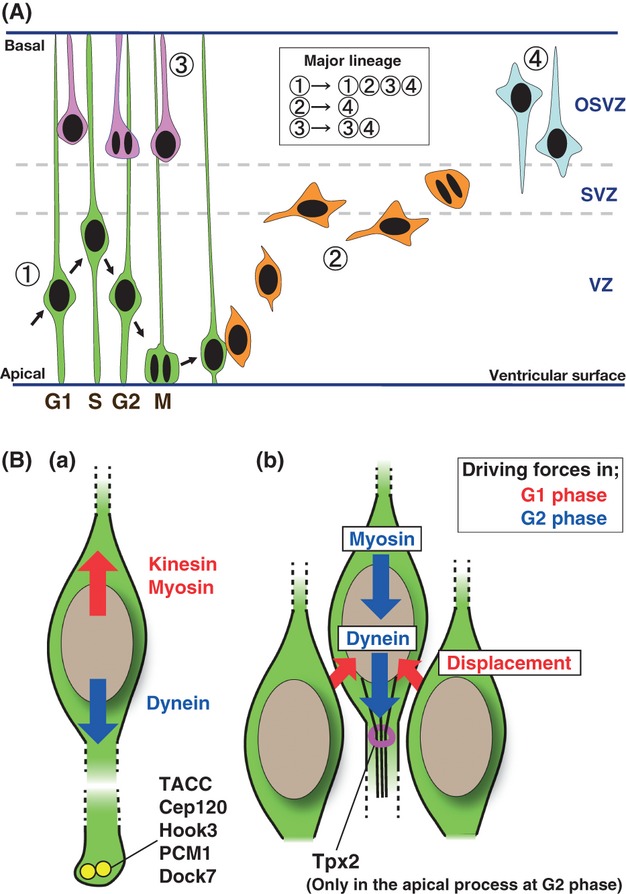Figure 1.

Major lineage of neural progenitors in mammalian cerebral cortex and interkinetic nuclear migration (INM) of apical progenitor. (A) Three kinds of neural progenitors identified in developing mammalian cortex (1–3) and postmitotic neuron (4) are illustrated. 1: Apical progenitor (green). 2: Basal progenitor (orange). 3: OSVZ progenitor (magenta). 4: Postmitotic neuron (light blue). Reported representative lineages from each progenitor (Fietz & Huttner 2011; Lui et al. 2011) are indicated in the square box. Cell cycle phases (G1, S, G2 and M) and the nuclear movement in each phase (arrow) of apical progenitor are described. VZ, ventricular zone; SVZ, subventricular zone; and OSVZ, outer subventricular zone. See text for details. (B) Schematics of mode of nuclear movements and proposed driving forces for INM. Arrows show directions of nuclear movements in each cell cycle phase (red: G1 phase, blue: G2 phase). Proposed driving forces for each direction of nuclear movement are indicated as (a) two opposing driving forces, (b) uni-directed driving force and displacement effect for the other direction from surrounded nuclei. See text for detail. The centrosome (yellow) may play an important role in INM because the functions of many centrosomal proteins are involved in INM. Tpx2 protein (magenta) is required for INM (basal-to-apical movement) and only observed in the apical process at G2 phase during interphase, suggesting that Tpx2 links cell cycle machinery with INM. See text for detail.
